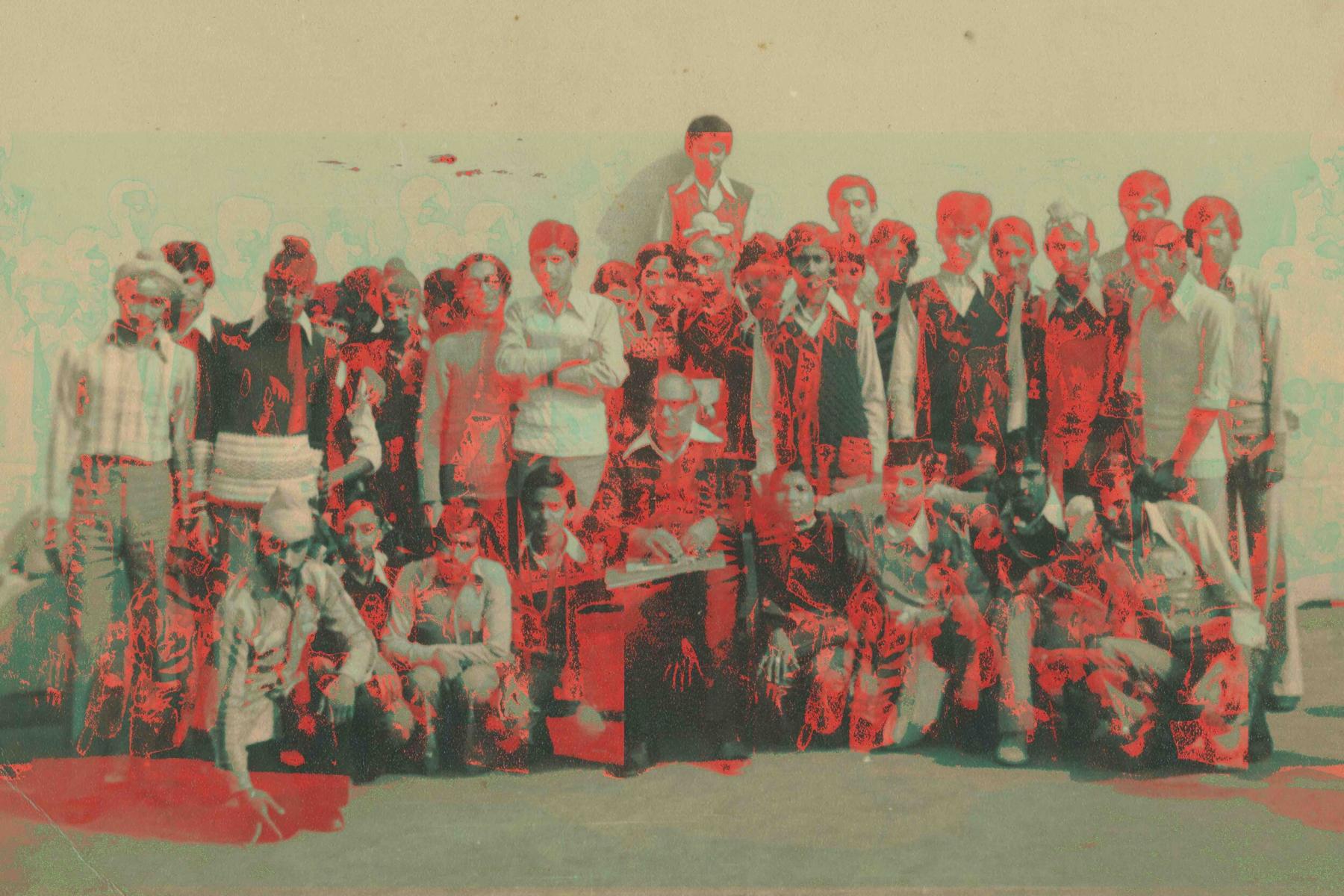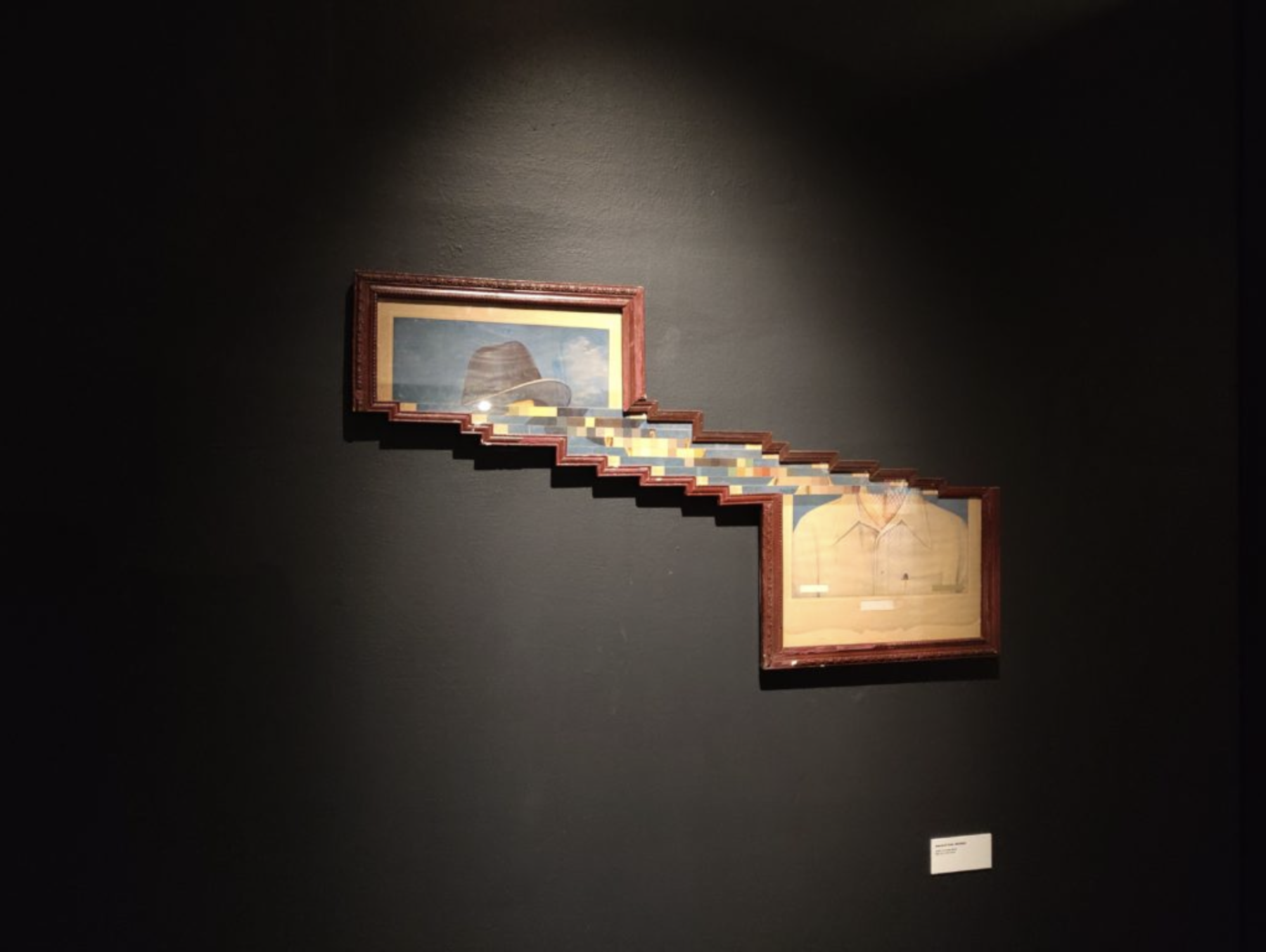Glitch Art: Dismantling Code Structures
In technical terms, a glitch is defined as a short-lived fault in a system—a momentary lapse of otherwise tightly secured logic and code—revealing something unexpected. We have all been witness to glitches in technological systems in the form of static or noise on the television screen, distortion of sounds over telephonic conversations, pixilation and unexpected freezing up of computers, or random visual patterns appearing on a broken smartphone screen. While we may have become accustomed to these glitches, as they occur over the multiple channels through which information is transmitted to us, they present a potent encounter with the otherwise inaccessible materiality of the information landscape we inhabit today.

WOUNDING. (Amitesh Grover. Digital Print on Daguerra Canvas, Code-book. Image courtesy of the artist.)
Digital (and physical) interfaces are designed to present a seamless flow of legible information to the computer users and perform the primary functions of translating, interpreting and arranging binary (strings of 1s and 0s) information, as understood by computer circuits, to audio-visual and textual information that can be understood by human beings. With digital images in particular, the moment of a glitch reveals to us the “natural” or underlying condition of images that are processed and viewed digitally as being a collection of colour values or pixels, distributed across a defined surface area. However, as with all acts of translation, this is not a neutral or straightforward process, and the interface is overlaid with many layers of cultural and social codifications dependent on the social conditions of their creators and their imagined audiences.
Since the early 2000s, artists, musicians and technologists have been engaged in exploring and exploiting the aesthetic and theoretical possibilities of the digital glitch, co-opting it as a productive strategy that often creates these moments of intentional system failure. Rosa Menkmen, in her seminal book on the glitch movement The Glitch Moment(um), uses the idea of momentum to “indicate the potential any glitch has to modulate or productively damage the norms of techno-culture, in the moment at which this potential is first grasped.”

Icon Rot. (Hemant Sreekumar. 2013. Image courtesy of the artist.)
“Decayed (glitched) visuals featuring icons of the three greatest political parties of India. Popularly slotted into a Left/Right and Center, these icons were initially opted to make an illiterate person feel part of certain historical contexts. All three political groups have since undergone a steady process of terminal ideological decay making each icon un-addressable from one another.”—Excerpt from Sreekumar’s statement about the work.
The aesthetic forms of the error, failure and glitch have become central to contemporary artists whose practice involve diverse media, from Hemant Sreekumar’s experimental music which incorporates distortions, errors and noise, to Nandan Ghiya’s remixed vintage photo-installations that incorporate the idea of digital glitch onto vintage painted photographs and their gilded frames. These strategies of production attempt to corrupt or break the medium they inhabit to reveal the layers of codification and enframing involved in their presentation, while establishing an encounter with the raw and abstract nature of visual and sonic information.

“DSC2065”. Installation view. (Nandan Ghiya. Jawahar Kala Kendra, Jaipur, 2012. Ellipsis: Between Word & Image. 2012. Photograph courtesy of Philippe Calia and Srinivas Kuruganti.)
Glitch artist Sabato Visconti notes: “Glitch photography understands how the apparatus of production envelopes the scene of where a subject (physical or digital) is captured in time with a camera device. One can trace the outlines of the apparatus beginning with the camera device itself (…) with its make and model, its metal and plastic case enclosing a choice of circuitry, its firmware with its limitations, the structure of its RAW image format and the compression algorithm of its JPEGs, and the type of storage media used. One can follow this outline towards how an image is processed, compressed, translated into a litany of formats; how the image is edited, corrected, colorized, airbrushed, and exported…One can trace it further towards the limitations of the screen, the graphics card, the internal memory, or hard drives yawning with age.”
You can read more of Anisha Baid's essays on the digital image here & here.




